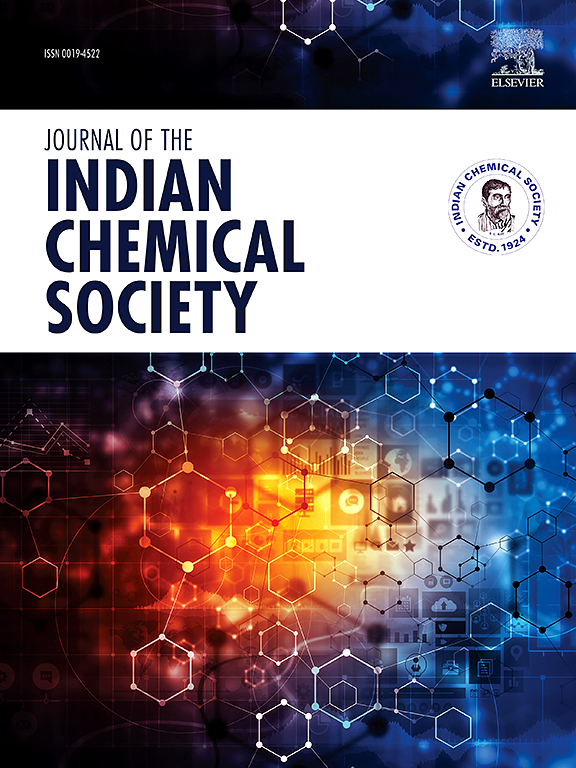Green synthesis of some selected transition metal oxide nanoparticles for energy storage applications in supercapacitors
IF 3.2
4区 化学
Q2 CHEMISTRY, MULTIDISCIPLINARY
引用次数: 0
Abstract
The increasing demand for viable and proficient energy storage systems has driven extensive research into environmentally friendly electrode materials. Transition metal oxide nanoparticles (TMO NPs) synthesized through green plant-mediated (GPM) approaches, have arose as auspicious candidates for supercapacitor applications owing to their high specific capacitance, tunable electrochemical properties, and eco-friendly synthesis routes. Traditional chemical and physical synthesis techniques often involve toxic reagents, high energy consumption, and complex procedures, making the transition toward biological methods an attractive alternative. GPM synthesis offers an environmentally benign, cost-effective and scalable approach by exploiting plant extracts as natural reducing and stabilizing agents. The review systematically examines the recent improvements in the GPM synthesis of TMO NPs, electrochemical properties, synthesis mechanisms, and performance of various TMO NPs, including nickel oxide (NiO), ruthenium oxide (RuO2), zinc oxide (ZnO), copper oxides (CuO), manganese dioxide (MnO2) and titanium dioxide (TiO2), for supercapacitor applications. These materials exhibit remarkable charge storage capabilities owing to their high surface area, tunable redox properties, and enhanced ion diffusion. The discussion also highlights the advantages of green-synthesized TMO NPs, such as improved biocompatibility, sustainability, and reduced environmental footprint, compared to conventional synthesis methods. Despite significant progress, challenges such as scalability, nanoparticle stability, and optimization of reaction conditions persist. This review provides insights into overcoming these challenges and outlines future directions for developing cost-effective, high-performance, and sustainable energy storage solutions using plant-mediated transition metal oxide nanoparticles.

用于超级电容器储能的过渡金属氧化物纳米颗粒的绿色合成
对可行和熟练的储能系统的需求日益增长,推动了对环保电极材料的广泛研究。通过绿色植物介导(GPM)方法合成的过渡金属氧化物纳米颗粒(TMO NPs)由于其高比电容、可调的电化学性能和环保的合成路线而成为超级电容器应用的吉祥候选者。传统的化学和物理合成技术通常涉及有毒试剂,高能耗和复杂的程序,使向生物方法过渡成为一个有吸引力的选择。通过利用植物提取物作为天然还原剂和稳定剂,GPM合成提供了一种环保、经济、可扩展的方法。本文系统地综述了GPM合成TMO NPs的最新进展、电化学性能、合成机制以及各种TMO NPs的性能,包括用于超级电容器的氧化镍(NiO)、氧化钌(RuO2)、氧化锌(ZnO)、氧化铜(CuO)、二氧化锰(MnO2)和二氧化钛(TiO2)。这些材料由于其高表面积、可调节的氧化还原特性和增强的离子扩散而表现出卓越的电荷存储能力。讨论还强调了与传统合成方法相比,绿色合成TMO NPs的优点,例如改善生物相容性,可持续性和减少环境足迹。尽管取得了重大进展,但诸如可扩展性、纳米颗粒稳定性和反应条件优化等挑战仍然存在。这篇综述提供了克服这些挑战的见解,并概述了利用植物介导的过渡金属氧化物纳米颗粒开发成本效益高、高性能和可持续的储能解决方案的未来方向。
本文章由计算机程序翻译,如有差异,请以英文原文为准。
求助全文
约1分钟内获得全文
求助全文
来源期刊
CiteScore
3.50
自引率
7.70%
发文量
492
审稿时长
3-8 weeks
期刊介绍:
The Journal of the Indian Chemical Society publishes original, fundamental, theorical, experimental research work of highest quality in all areas of chemistry, biochemistry, medicinal chemistry, electrochemistry, agrochemistry, chemical engineering and technology, food chemistry, environmental chemistry, etc.

 求助内容:
求助内容: 应助结果提醒方式:
应助结果提醒方式:


